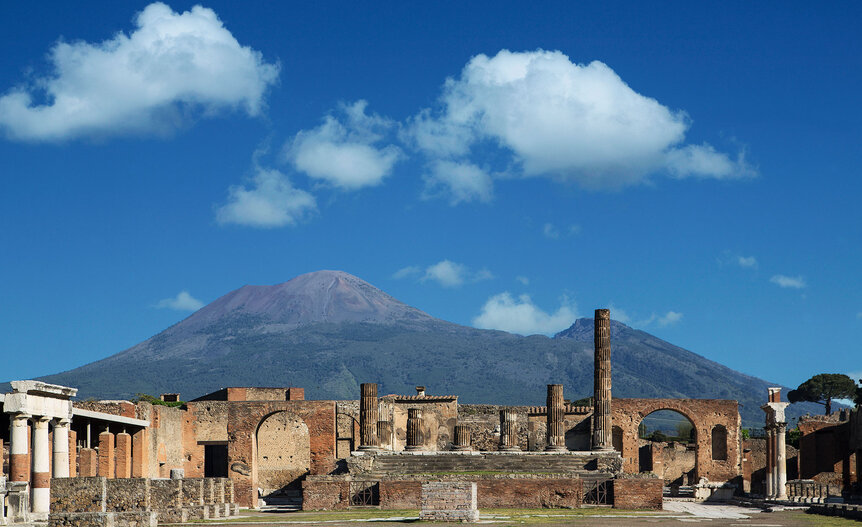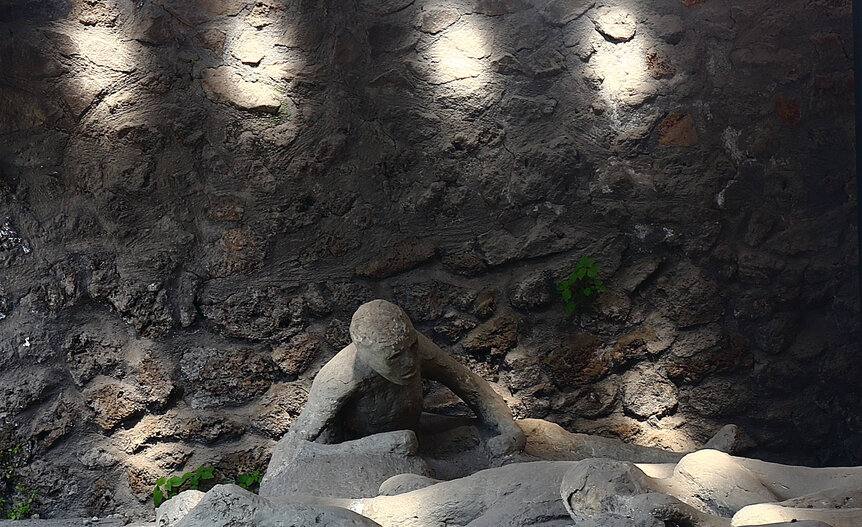The Real History of the Mount Vesuvius Eruption Explained, as Featured in Those About to Die
More than TV magic, the eruption of Mount Vesuvius was one of the deadliest volcanic eruptions in history.
Executive producer Roland Emmerich is taking viewers to Ancient Rome in the Peacock original series Those About to Die. The story centers on the bloodthirsty sword and sandals world of the Roman gladiatorial games, where death was practically guaranteed.
The lives and experiences of the gladiators are set against a historical backdrop circa the first century A.D. The area, at the time, is literally heating up. In the second half of the season, a series of earthquakes rock the region, and the nearby Mount Vesuvius erupts. A cloud of ash reaches Rome, covering the city in dusky debris, and refugees from nearby Pompeii flood in by the thousands, seeking safety and comfort.
RELATED: The True Story Behind Those About to Die: Where Fact Meets Fiction in Peacock's Epic Roman Saga
It’s an explosive backdrop for an already high-adrenaline story, and it’s also one of the most famous and deadly real-world disasters in recorded history.
The Eruption of Mount Vesuvius in 79 A.D.
Historically speaking, the trouble really began in 62 AD, when a major earthquake struck the region, damaging large swathes of Pompeii. Another earthquake hit two years later, in 64, and residents were still rebuilding 15 years later, in 79. A series of earthquakes were reported in the fall of 79, but they were small, and no one suspected that all of these tremors were omens of something to come.
With the benefit of hindsight and modern scientific knowledge and methods, we now know those earthquakes were evidence that the magma chamber beneath Vesuvius was growing, and it was about to go off.
RELATED: Everything to Know About Those About to Die
The volcano had been mostly dormant for centuries, long enough for a robust civilization to grow up around it. An estimated 20,000 people lived in Pompeii, taking advantage of the rich volcanic soil leftover from earlier eruptions. When the volcano erupted in the fall of 79, thousands were consumed by a wave of ash, pumice, and mud, freezing them in place beneath a fresh layer of volcanic sediment. Over the centuries, Pompeii and her dead were forgotten, and they remained buried for nearly two millennia until a farmer found part of the city beneath a vineyard in 1748.
The eruption happened at mid-day, sending a pillar of ash and volcanic shrapnel approximately 10 miles into the air. All of that debris fell back to the ground over the next 12 hours, covering Pompeii in a layer of ash several inches thick. Many of the city’s residents saw the writing on the wall and fled, but roughly 2,000 people stayed, hoping they could ride out the worst of things.
In Those About to Die, we see the effects of the eruption as it affects the people of Rome, with the fallout from the ash cloud reaching all the way to the city of Rome, coating the city in an inky, black cloud.
RELATED: Those About to Die: Everything to Know About the Cast & Characters in Peacock's Gladiator Series
The next morning, pyroclastic flows (fast-moving collections of hot, toxic gas and volcanic material) rushed down the sides of Vesuvius and into the city. All who had remained, suffocated in place. A wave of rock and ash followed soon after, destroying buildings and burying the dead. By the end, the city was buried in 15 feet of ash and pumice.
The ash and debris covered the victims in a sort of natural plaster which hardened over time. As the bodies decayed, empty cavities were left behind, like cast molds. Researchers later filled those cavities with plaster to make cast replicas of the dead, which are exhibited at museums all over the world. The preserved remains of the people and animals who died at Pompeii are a priceless historical time capsule of a bygone era and a gruesome monument to an ancient disaster. Their tragic deaths continue to capture our imaginations, and inspire our stories, almost 2,000 years later.
All 10, hour-long episodes of Those About to Die are streaming now on Peacock.




















